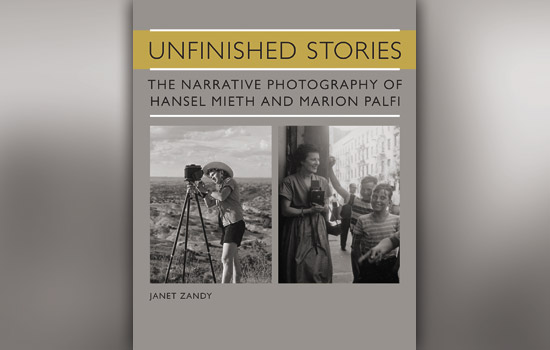‘Unfinished Stories’ links pioneer photographers
Author Janet Zandy parallels the lives and works of Hansel Mieth and Marion Palfi
The Narrative Photography of Hansel Mieth and Marion Palfi by Janet Zandy
This book forges a place for Hansel Mieth and Marion Palfi in the history of photography and in the history of American race and class struggle. Justice is the hub of their work.
—Janet Zandy, author of Unfinished Stories
Hansel Mieth (1909-1998) and Marion Palfi (1907-1978) were German-born émigrés, two female photographers who pioneered visual storytelling in remarkably similar styles and subjects, but never met—until author Janet Zandy studied the parallels in their lives and work in her new book, Unfinished Stories: The Narrative Photography of Hansel Mieth and Marion Palfi.
Mieth was the second female staff photographer employed by Life magazine in 1937. Palfi’s photo of mixed race of Henry Street Settlement kids was the first cover of Ebony magazine in 1945.
“Mieth and Palfi were great visual storytellers who blurred the lines between art and documentary,” says Zandy, professor emerita from the department of English at Rochester Institute of Technology and an American Studies scholar specializing in American working-class culture. “The book encompasses the embedded narratives in their photographs, their genius for sequencing photo stories, and their missing place in the history of photography and in the visual memory of Americans.”
Published by RIT Press, the scholarly publishing enterprise at RIT, Unfinished Stories presents the first full biographies of Mieth and Palfi and a parallel study of their photographs. The book features 98 black and white archival images including little known or never published photographs, such as Workers Alliance meeting in the 1930s by Mieth, and the 1963 March on Washington by Palfi.
Mieth created her own interpretative spaces in her photo stories for Life, the ones they published, and the many—of cowboys visiting with their babies, of Heart Mountain internment camp families—they did not publish. The recipient of prestigious grants, Palfi traversed the U.S. photographing a hidden America of segregated schools and housing, of relocated Native Americans and of the powerless, whether children, the elderly or prisoners. Mieth resigned from Life at the height of her success. Palfi’s brave photo investigations of Jim Crow America were rejected by publishers.
“I was drawn to their work because of their sense of responsibility as artists, because of how their photography illuminates class and race relations in the United States, because of the power and similarity of their images, because of their skills in visual sequencing, because of their determination to tell stories many Americans did not want to see, and because they have generally been excluded from the history of photography,” says Zandy.
“They believed that photography has the potential to rouse awareness of the human condition; so do I.”
Unfinished Stories: The Narrative Photography of Hansel Mieth and Marion Palfi was produced in association with the Center for Creative Photography, University of Arizona, Tucson. The book is available in softcover for $34.99 at The RIT Press website or by calling RIT Press at 585-475-6766.














